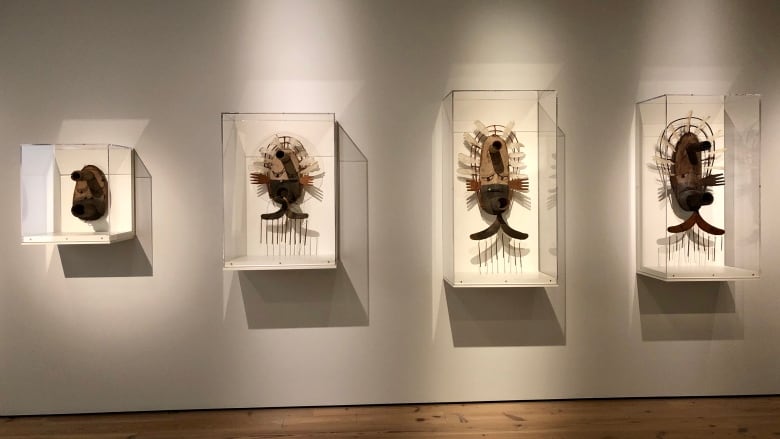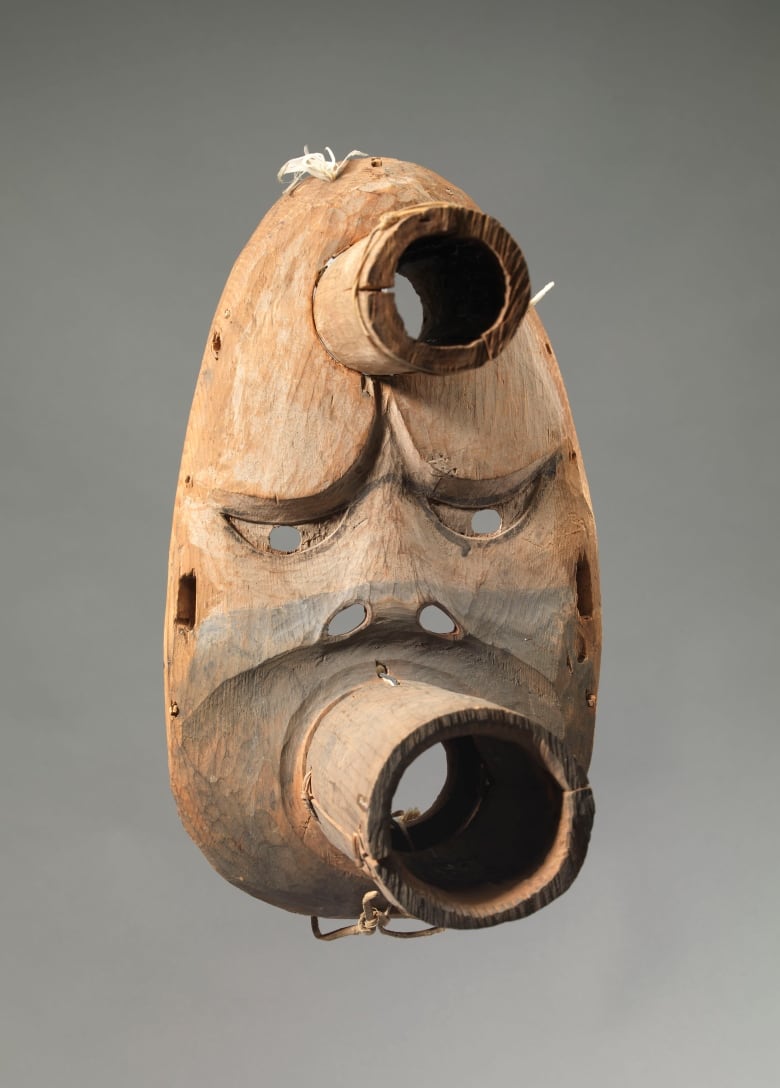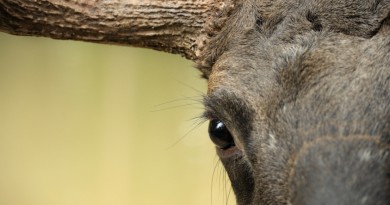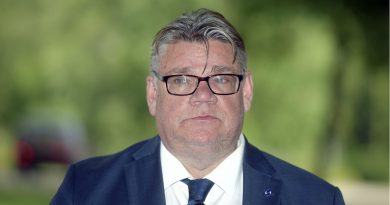Set of Indigenous Yup’ik masks reunited in Alaska after more than a century

It’s a reunion that’s been more than a century in the making — a set of century-old Yup’ik masks have been brought back to Alaska and displayed at the Anchorage Museum.
“These masks are well-travelled, and have been separated for so many years,” said Monica Shah, director of collections and chief conservator at the museum.
“It’s really important that they are shared with the Yup’ik community and are able to be brought back, because it is the inheritance of the Yup’ik community.”
Shah says it’s believed the masks were made in about 1908, by Ikamrailnguq, a renowned carver and shaman in Napaskiaq. As with many Alaska native artifacts, the masks were sold or traded over the years, winding up in distant museums and collections.
“So many of our older collections in Alaska are in other places — in Russia, and Finland, and Germany, on the east coast of the United States — it’s a rare treat to be able to have them here, physically,” Shah said.
Completing the set
Shah says three of the masks were known for many years to be linked, but the fourth was unknown.
“It was thought that perhaps there is one missing, because these masks represent the weather, and the wind, and it makes sense that there would be four because of the four cardinal directions,” Shah said.
Eventually, a Yup’ik elder spotted the fourth mask, at L.A.’s Fowler Museum.

“He immediately recognized it as a match to one of the masks in Washington D.C. So there are two pairs, essentially — they’re a quartet of masks, but two are of a similar size and the other two are of a similar size,” Shah said.
The Anchorage Museum’s exhibition opened earlier this month and Shah says it was standing room only at the opening. She called it a “momentous” occasion, made even more special when some university students wandered in to the exhibit.
“It turned out that they were actually from the village that these masks are from, from Napaskiaq. And it was really just heartwarming to see that connection that people have with their own heritage,” Shah said.
With files from Emily Blake and Leonard Linklater
Related stories from around the North:
Canada: Passing of celebrated Inuit carver Barnabus Arnasungaaq marks end of era, Radio Canada International
Finland: Sámi school preserves reindeer herders’ heritage with help of internet, Cryopolitics Blog
United States: Inuit carvings head to Northern Canada after decades in California, CBC News



